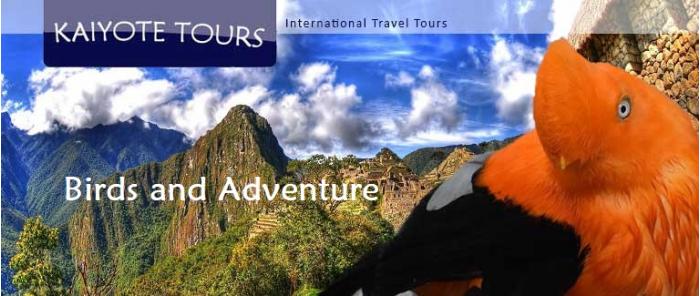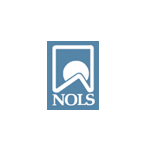Hummingbirds of Peru Birding Tour
60 Species of Hummingbirds in 17 days
Do you love hummingbirds? Do you love photographing them and other colorful birds? Join us for a very special trip with expert local guides to view hummingbirds and many other birds species as well.
We expect to see 400 - 500 different species of birds.
The trip is in three parts, with additional travel days.
- 3 days Santa Eulalia Canyon and Ticlio areas
Overnight trip to Santa Eulalia featuring Great Inca-Finch, Rufous-breasted Warbling-Finch, Black-necked Flicker, Bronze-tailed Comet, Peruvian Sheartail, Black-breasted Hillstar, Black Metaltail, Olivaceous Hornbill, Andean Condor, Torrent Duck, White-capped Dipper, White-cheeked Cotinga, Diademed Sandpiper-Plover, and many more.
- 5 days in Northern Peru
Featuring Marvelous Spatuletail and Rufous-crested Coquette, and many special birds such as Oilbird, Antpittas, and Long-whiskered Owlet. Wonderful for photography.
- 5 days Cusco area with Machu Picchu
Special hummingbirds include endemic White-tufted Sunbeam, Green-and-White Hummingbird, Scaled Metaltail, Cuzco Starfrontlet, Gould's Inca, and Bearded Mountaineer, as well as the splendid Swallow-tailed Hummingbird, Green-tailed and Black-tailed Trainbearer, Long-tailed Sylph, Sword-billed Hummingbird and Great Sapphirewing.
- Travel Dates: May 1 - 17, 2027
- Group Size: 7 travelers plus guides, spots left = 5
- Trip Length: 17 days
- Rates: Rate per person = $5,750 (based on double occupancy)
- Rates include: Domestic transfers, lodging, breakfast, lunch, dinner, scheduled group tours, entrance fees, and Allianz basic travel insurance.
- Not included: International airfare, customs & immigration fees and visas, alcohol, trip cancellation insurance.
- Adventure level: Moderate, but there is significant elevation*, please check "Welcome" page for definition and below you will find info about the elevation.
- Reservations: To reserve a spot on the trip, a non-refundable $800 per person deposit is required, and the non-refundable balance is due six months prior to the trip.
*Elevation: The elevation of the city of Cusco is 11,152 feet. The elevation of Machu Picchu is 7,972 feet. Most of the daily birding tours will be at elevations from 5,000 - 8,000 feet. We will cross over the Abra Malaga pass at 13,779. There will be one day of birding tour that reaches 10,300 feet. Please contact us for more info about elevation.
Special offer: Included with your trip (one per room) is a copy of the “Birds of Peru” (Princeton Field Guides) by Thomas S. Schulenberg. You will receive this when you reserve your trip so you will have time to study and know the beautiful birds of Peru.
Day 1: Arrival in Lima, Peru
You will be met at the Jorge Chavez International Airport (LIM) and transported to our hotel in Lima where we will spend 3-nights.
Day 2: Santa Eulalia
We will make a 4 AM start straight for Santa Eulalia Valley in order to be in position when the rare Rufous-breasted Warbling-Finch is more active. There are many west slope specialties here, such as Black-necked Flicker, Oasis Hummingbird, Peruvian Sheartail, Bronze-tailed Comet, Great Inca-Finch, Peruvian Pygmy-Owl, Canyon Canastero, Rusty-bellied Brush-Finch, Bright-rumped Yellow-Finch, Thick-billed Miner, Pied-crested Tit-Tyrant, Rusty-crowned Tit-Spinetail, Streaked Tit-Spinetail and many others. We stay in the quite comfortable Huachupampa hotel with private bath and hot water at around 2900m.
Day 3: Santa Eulalia
In the early morning we will be at the look out to spot Andean Condors flying out from their roosting cliffs. At the Polylepis forest we have been very successful with White-cheeked Cotinga in the past. Also present are Striated Earthcreeper, Stripe-headed Antpitta, Giant Conebill, Tit-like Dacnis, Rufous-webbed Bush-Tyrant , Torrent Duck, White-capped Dipper and maybe we spot White-tailed Shrike-Tyrant found here twice. We will continue over the 4900m pass to the Milloc bog for things like Puna Tinamou (rare), Giant Coot, Gray-breasted and Rufous-bellied Seed-snipes, Puna Snipe, Southern Pochard (twice), Andean Ibis and of course all the targets: Diademed Sandpiper-Plover, White-bellied Cinclodes, Olivaceous Thornbill, Black-breasted Hillstar, Dark-winged Miner, Junin Canastero, Ground-Tyrants and many more. In the afternoon we shall drive back to Lima or will be connecting to Junin Lake, Central Peru or Carpish.
Day 4: Ticlio area
Leaving Lima at 5 AM, we will try for the Rufous-breasted Warbling-Finch and other endemics that we might have missed the previous days. This area is also one of the best to find Canyon Canastero and Andean Condor.
Day 5: Flight to Tarapoto
In the evening we will fly to Tarapoto and spend the night.
Day 6: Tarapoto-Rioja, Yurimaguas Road, and Morro Calzada.
Travel to the tunnel area on the Yurimaguas road. Here we find a number of special upper tropical species such as Blackish Pewee, Dotted Tanager, Oilbird, and with luck the localized Plumbeous Euphonia. We also often see Andean Cock of the Rock, Swallow-tailed Kite, and Paradise Tanagers. Later we continue to ACONABIKH where there are hummingbird feeders that attract Koepcke's Hermit, Gould's Jewelfront, Black-bellied Thorntail, and Black-throated Brilliant and many more. A short hike take us to a lek with Golden-headed Manakin. There are also a number of other Amazonian forest birds here. Around noon we will continue towards Moyobamba. On the way we shall stop to look at Oilbirds at the Quiscarumi gorge. We will finish the afternoon at Morro de Calzada, a strange rock formation on the Moyobamba-Rioja plateau. This area is good for Mishana Tyrannulet, Cinereous-breasted Spinetail and sometimes Spot-fronted Swift and White-chested Swifts which come to roost. It is also a good spot for nightjars at dusk with Spot-tailed, Rufous, Blackish and Little Nightjars and often calling Common Potoo, as well as Stygian Owl.
Day 7: Birding Waqanki
Those who are fit may want to try the ridge trail above Waqanki for Scarlet-breasted and Fiery-throated Fruiteaters, Ash-throated Antwren, Chestnut-throated Spinetail and many more. The hummingbird-feeders at Waqanki are fantastic. It is often possible to get over 15 species of hummingbirds in only a couple of hours. The star species is Rufous-crested Coquette and Black-throated Hermit. We continue over the Moyobamba-Rioja plain checking out ponds and rice paddies for Pale-eyed Blackbird, Black-capped Donacobius, Least Grebe and Black-billed Seed-Finch. Later at the new birding resource at Aguas Verdes called Arena Blanca. Here the is a fantastic feeding station for Rufous-breasted Wood-Quail and Little and Cinereous Tinamou. Also, Yellow-billed Sparrow comes to the grains provided from the feeding station. There is also an area set up for hummingbirds. The specialty here are Green-fronted and Blue-fronted Lancebill, as well as Wire-crested Thorntail, but there are loads of other hummers too. The white-sand forest is very interesting with Northern Chestnut-tailed (Zimmer's) Antbird, Varzea Thrush, Mishana Tyrannulet and Black-bellied (Huallaga) Tanager. We end the day at Fundo Alto Nieva with the hummingbird feeders which often attract Royal Sunangel and Rufous-vented Whitetip. the feeding station for Ochre-fronted Antpitta, and at night a first try for Long-whiskered Owlet at the Owlet Lodge. Overnight at the Owlet Lodge.
Day 8: Afluentes - Abra Patricia
The trails at the Owlet Lodge are good for Chestnut Antpitta, Barred Antthrush, Wattled Guan, White-faced Nunbird, etc. The feeding flocks contain Hooded Mountain-Tanager, Scarlet-bellied Mountain-Tanager, Blue-backed Conebill, Spectacled Whitestart, Pearled Treerunner, White-throated Tyrannulet, Blue-and-Black Tanager and Metallic-green Tanager. Midmorning we transfer to the birdy Afluentes area. The flocks in the subtropical roadside forest can be very impressive. Vermilion Tanager, Subtropical Cacique, Speckle-chested Piculet, Montane Woodcreeper, Montane Foliage-gleaner, Streaked Xenops, Blue-necked and Bay-headed Tanagers and the endemic Ash-throated Antwren and many other birds. Sometimes we have seen Black-billed Toucan, Red-ruffed Fruitcrow, Umbrellabird and Andean Cock of the Rock in this area. We shall get a second chance for Long-whiskered Owlet if necessary or try for Cinnamon Screech-Owl. Overnight at Abra Patricia Owlet Lodge.
Day 9: Birding at Long-whiskered Owlet Lodge
Another morning at the Owlet Lodge. The feeders have Emerald-bellied Puffleg, Sword-billed Hummingbird, Peruvian Rackettail, Bronzy Inca, Violet-fronted Brilliant and Collared Inca. From the lookout one may often see White-capped Tanager. Ochre-fronted Antpitta and Lulu’s Pygmy-Tyrant can also be found in the area. We continue mid-morning to Pomacochas where we spend some time practicing bird photography at the Hummingbird feeders at Huembo with close-up views of the Marvelous Spatuletail and other hummers such as Collared Inca, Chestnut-breasted Coronet, Sparkling Violet-ear, White-bellied Woodstar, White-bellied Hummingbird and Bronzy Inca. A rare visitor is Little Woodstar. Those who are fit enough may want to try for Pale-billed Antpitta up the track to San Lorenzo. Also, we can take the vehicle all the way to San Lorenzo, other birds that may be encountered, are Chestnut-crowned Cotinga, White-capped Tanager, Rusty-tinged Antpitta, schulenbergi race of Plain-tailed Wren and Russet-mantled Softtail. Lodging at Huembo Birding Lodge.
Day 10: Hummingbirds at Huembo and Pomacochas and drive to Jaen.
We shall be visiting a lek site for Marvelous Spatuletail in the morning or have some additional time for photographing the Spatuletail in the morning. The lek is active on and off between November to April but some luck is also needed. Later we drive to Jaen with selected stops on the way for Peruvian Pigeon, Marañon Thrush and perhaps Buff-bellied Tanager. We arrive to Jaen for a late lunch in the field while we look for Little Inca-Finch, Marañon Crescentchest, Marañon (Northern) Slaty Antshrike, Chinchipe Spinetail and with luck Marañon Spinetail.
Day 11: Cusco-Sacsayhuaman-Ollantaytambo-Aguas Calientes
We will take a short drive around Cusco's main plaza with the cathedral and a short stop if time permits to bird close to the impressive Inca ruins of Sacsayhuaman above town (entrance not included, but non-birding partners may choose to do a visit while the others bird-watch. Most birds should be seen on the following days). Creamy-crested Spinetail, Chestnut-breasted Mountain-Finch, Peruvian Sierra-Finch, Yellow-billed Tit-Tyrant, Chiguanco Thrush, Red-backed Hawk, Black-backed Grosbeak, Sparkling Violetear and Golden-billed Saltator are all possible here. At 8:00am we leave for Ollantaytambo. After leaving our luggage at the hotels in Ollantaytambo, and if time permits, some birding in Ollantaytambo specifically looking for Bearded Mountaineer. We will board the 10:30am train to Aguas Calientes. From the train we shall look out for Torrent Duck, White-capped Dipper and Torrent Tyrannulet in the stream that runs along the railroad track. Usually, these are seen also in Aguas Calientes, but there since the river is regulated for hydroelectric purposes upstream sometimes there is not enough water for the duck in the Aguas Calientes. After checking at our hotels and lunch we’ll take the bus to Machu Picchu citadel for an afternoon visit. A little known fact is that the light for photography at Machu Picchu is much better in the afternoon than early morning and there are far less people. Close to the ruins one can find the endemic Inca Wren, Cuzco Brush-Finch, White-winged Black-Tyrant, Dull-colored Seedeater, Highland Elaenia, sometimes Peregrine or Orange-breasted Falcon and Green-and-White Hummingbird. Back in Aguas Calientes at dusk, those who want can look for Lyre-tailed Nightjar.
Day 12: Birding Machu Picchu
Predawn breakfast. The area below the ruins is rich with birds and many good species can be seen such as: Torrent Duck, White-capped Dipper, Mitred Parakeet, Barred Parakeet, Andean Guan, Andean Cock-of-the Rock, Ocellated Piculet, White-eared Solitaire, Highland Motmot, Variable Antshrike, Black-streaked Puffbird, White-crowned, Sierran and Highland Elaenia, the endemic Masked Fruiteater, Saffron-crowned, Flame-faced, Rust-and-Yellow and Beryl-spangled Tanagers, Mottled-cheeked and Sclater's Tyrannulet and many more. The train back to Ollantaytambo leaves from 3pm and takes two hours.
Day 13: Birding Abra Malaga
We will get up very early for the drive up beyond the Abra Malaga pass at 13,779 and continue to the north side of the pass and the wet temperate forest at Canchayoc. Here we may see Diademed Tapaculo, Unstreaked Tit-Tyrant, Golden-collared Tanager, Violet-throated Starfrontlet, Parodi’s Hemispingus, Marcapata Spinetail, Tit-like Dacnis, Cuzco Brushfinch and Rufous-bellied Bush-Tyrant. Rusty-breasted (Leimebamba), Red-and-White, Rufous (occubambae race) and Undulated Antpitta are often heard and with some luck we may be able to lure some of them into view with play-back of its call. Returning to the pass around mid-morning we will do a short, but quite strenuous walk to the Polylepis woodland on the ridge beside us. This is the most accessible high Polylepis woodland that holds the very rare Royal Cinclodes, Ash-breasted Tit-Tyrant and White-browed Tit-Spinetail. Among other specialties are Giant Conebill, Line-fronted and Junin Canastero, Puna Tapaculo, Stripe-headed Antpitta, Thick-billed Siskin, Tawny Tit-Spinetail, Red-rumped Bush-Tyrant and Puna Thistletail. As we come out of the valley, we stand good chance of encountering Andean Parakeet and Tit-like Dacnis. Back on the main road in roadside scrub we often find Junin Canastero, Chestnut-breasted Mountain-Finch and Golden-billed Saltator.
Day 14: Morning Abra Malaga - Afternoon Apurimac Valley
After additional morning at Abra Malaga to pick up species we may have missed the previous day, we shall continue to Laguna Huaypo for some marshland birding with Many-colored Rush-Tyrant, Wren-like Rushbird, Yellow-winged Blackbird, Andean Lapwing, Puna Teal, Yellow-billed Teal, Yellow-billed Pintail, Andean (Masked) Duck, Puna Ibis, Andean Gull and many more. It is a long drive through the dry Apurimac valley, and over to the other side where we shall particularly look for the yet undescribed “Apurimac Tapaculo” and Apurimac Spinetail. Some night birding may award us with the Apurimac forms of Peruvian Pygmy Owl and Koepcke's Screech-Owl, and with lots of luck perhaps Buff-fronted Owl.
Day 15: Apurimac Endemics
We'll start looking for Pale-tailed Canastero and Spot-eared Puffbird near Moyopata and then spend the rest of the morning birding on Salcantay road. Apurimac Spinetail, Apurimac Brushfinch, White-tufted Sundbeam, Chestnut-breasted Warbling-Finch, Undulated Antpitta and Vilcabamba Tapaculo are found here. We travel to Cusco and will be able to make a late afternoon flight back to Lima.
Day 16: Lima
Our last day Peru will consist of a local history and culture tour, plus some birding.
Day 17: Flights Home
You will be shuttled to the Jorge Chavez International Airport (LIM) for your flight home












 Follow
Follow

